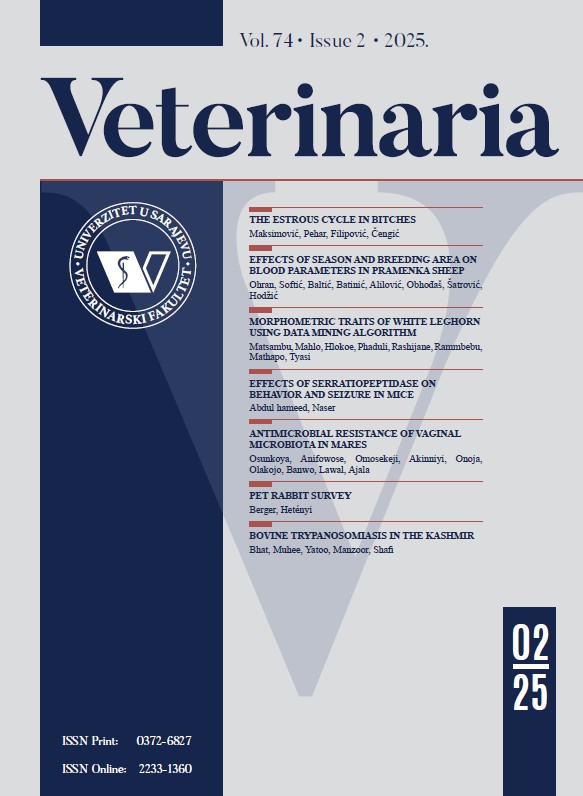Ovarian potential of local goats for in vitro embryo production in the Far North of Cameroon
DOI:
https://doi.org/10.51607/22331360.2025.74.1.73Keywords:
Cameroon, follicular population, goats, ovaries, oocyte qualityAbstract
The study was carried out on 281 local goats (257 Sahelian and 24 Kirdi) at the municipal small ruminant abattoir in Maroua, in the Far North region of Cameroon. 562 ovaries were collected and transported to the laboratory in a 9% NaCl solution. After clearing the ovaries of surrounding tissue, the follicles on each ovary were counted, their diameter (Φ) measured and classified into small (Φ < 3 mm), medium (3 ≤ Φ ≤ 8 mm) and large (8 ≤ Φ < 10 mm). Subsequently, the oocytes were then harvested in Dubelcco's Phosphate Buffered-Saline solution using slicing technique and observed under a light microscope at 10X magnification and classified into four groups according to the degree of cumulus cell compactness and ooplasm transparency. The mean follicular population was 25.38 ± 6.84 per ovary. Small, medium and large follicles were 5.87 ± 2.90, 15.64 ± 4.71 and 3.86 ± 1.69, respectively. Oocyte yield was 33.39 ± 11.71 per ovary. Quality I, II, III, IV oocytes were 11.57 ± 3.33 (34.65%), 9.64 ± 3.05 (28.87%), 8.25 ± 3.26 (24.71%) and 3.93 ± 2.01 (11.77%), respectively. The oocyte quality index was 2.11. Oocytes with quality (grade I and II) acceptable for in vitro embryo production (IVEP) constituted (63.52%) of the harvest. These results indicate that certain factors such as age, body condition, pregnancy status and stage, ovarian weight and corpus luteum must be taken into account to increase the potential of the ovary for in vitro embryo production.

Downloads
Published
How to Cite
Issue
Section
License
Copyright (c) 2025 Justin Kouamo, Joseph Mampom Baring

This work is licensed under a Creative Commons Attribution 4.0 International License.







